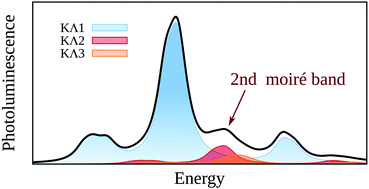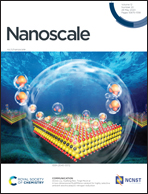Hybridized intervalley moiré excitons and flat bands in twisted WSe2 bilayers†
Abstract
The large surface-to-volume ratio in atomically thin 2D materials allows to efficiently tune their properties through modifications of their environment. Artificial stacking of two monolayers into a bilayer leads to an overlap of layer-localized wave functions giving rise to a twist angle-dependent hybridization of excitonic states. In this joint theory-experiment study, we demonstrate the impact of interlayer hybridization on bright and momentum-dark excitons in twisted WSe2 bilayers. In particular, we show that the strong hybridization of electrons at the Λ point leads to a drastic redshift of the momentum-dark K–Λ exciton, accompanied by the emergence of flat moiré exciton bands at small twist angles. We directly compare theoretically predicted and experimentally measured optical spectra allowing us to identify photoluminescence signals stemming from phonon-assisted recombination of layer-hybridized dark excitons. Moreover, we predict the emergence of additional spectral features resulting from the moiré potential of the twisted bilayer lattice.

- This article is part of the themed collections: Nanoscale Most Popular 2020 Articles and Editor’s Choice: Optical Spectroscopy of 2D materials


 Please wait while we load your content...
Please wait while we load your content...